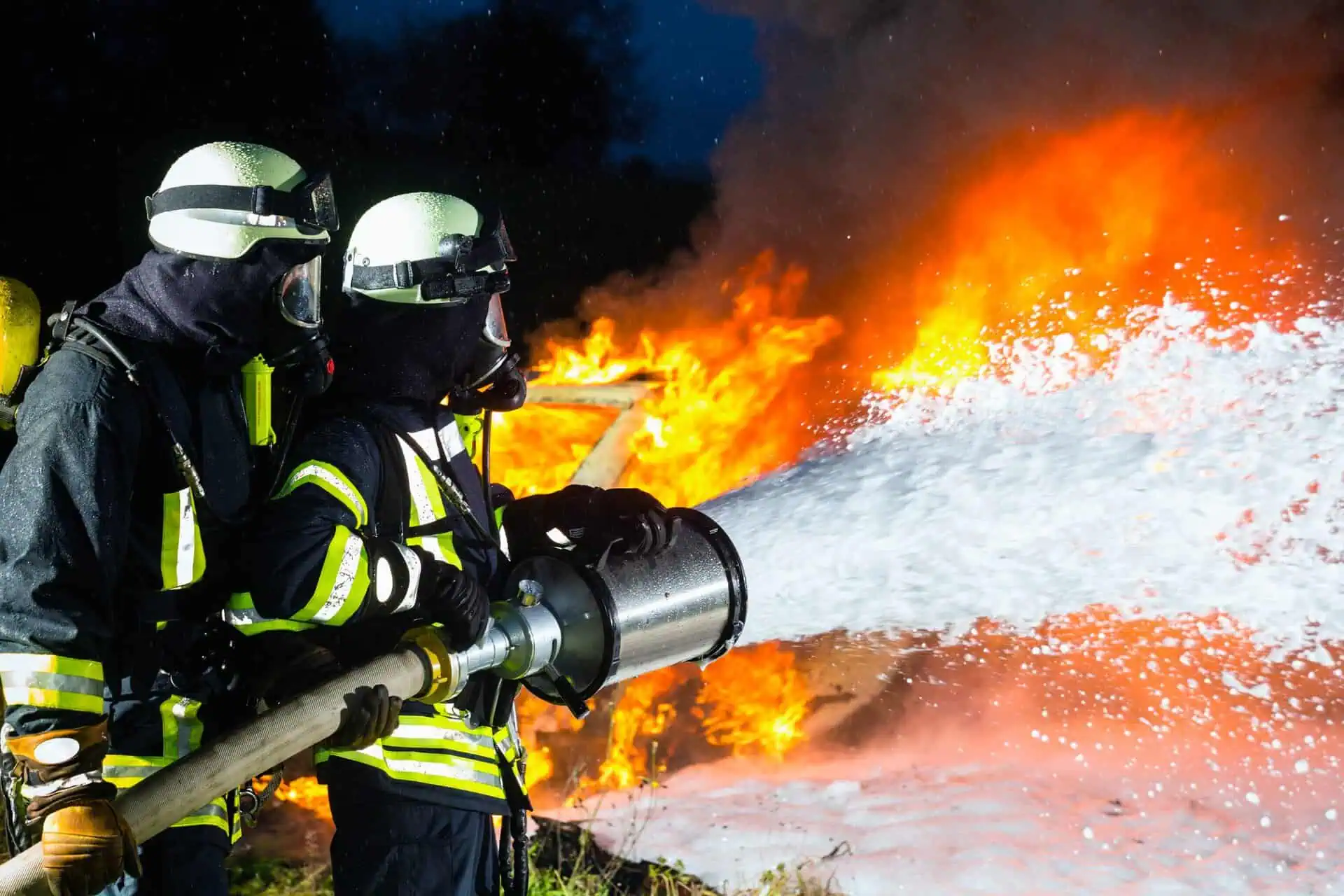Firefighting Foam Cancer: What is it?
- Last Updated: July 14th, 2025

Attorney Jessica Paluch-Hoerman, founder of TruLaw, has over 28 years of experience as a personal injury and mass tort attorney, and previously worked as an international tax attorney at Deloitte. Jessie collaborates with attorneys nationwide — enabling her to share reliable, up-to-date legal information with our readers.
Legally Reviewed
This article has been written and reviewed for legal accuracy and clarity by the team of writers and legal experts at TruLaw and is as accurate as possible. This content should not be taken as legal advice from an attorney. If you would like to learn more about our owner and experienced injury lawyer, Jessie Paluch, you can do so here.
Fact-Checked
TruLaw does everything possible to make sure the information in this article is up to date and accurate. If you need specific legal advice about your case, contact us by using the chat on the bottom of this page. This article should not be taken as advice from an attorney.
Key takeaways:
- The exposure to firefighting foam and its chemicals can occur through inhalation, skin contact, and ingestion, making firefighters particularly vulnerable to the potential carcinogenic effects.
- Perfluorooctane sulfonate (PFOS) and perfluorooctanoic acid (PFOA) are two commonly found chemicals in firefighting foam that are known to persist in the environment and accumulate in the body, raising concerns about long-term health effects.
- Exposure to PFAS in firefighting foam has been linked to various types of cancer, including testicular, kidney, and pancreatic cancer, raising serious health concerns for firefighters and those living near firefighting training areas.
Firefighters put their lives on the line every day to protect our communities from the ravages of fire.
But did you know a hidden danger lurks in the tools they use to fight these infernos?
Dangerous chemicals like asbestos and jet fuel are present in firefighting foam, posing a serious threat to the health and well-being of those who bravely battle the flames.
PFAS exposure is also a concern for firefighters.
It’s called firefighting foam cancer, and it poses a serious threat to their health.
Firefighting foam, which contains dangerous chemicals such as asbestos and PFAS, has been linked to an increased risk of various types of cancer, including prostate cancer, testicular, breast, and more.
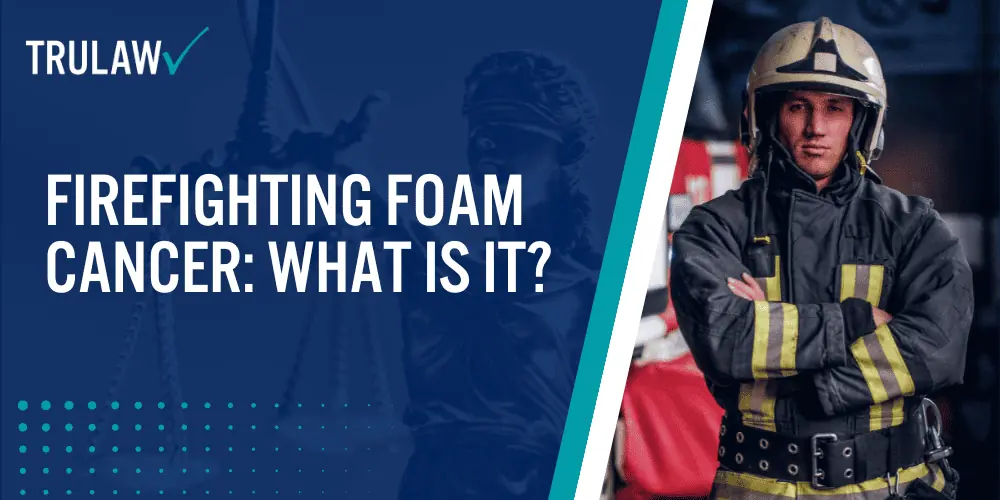
This alarming connection has raised concerns among firefighters and researchers alike, prompting a closer examination of its causes and the impact of exposure to these carcinogens.
In this investigation, researchers will uncover the role that PFAS exposure, such as from jet fuel, plays in exacerbating the risk of municipal water contamination cases.
We’ll examine how traces of firefighting foam chemicals can be found in blood serum samples taken from firefighters.
Understanding the complex relationship between firefighting foam and cancer, including water contamination, asbestos, PFAS exposure, and mesothelioma, is crucial for safeguarding the health and safety of our brave firefighters.
By shedding light on this topic, we hope to raise awareness about its importance within the firefighting community and society.
So join us as we embark on this eye-opening journey into the world of military firefighters and their battle against water contamination, asbestos, and PFAS exposure.
Together, let’s uncover the truth behind this silent threat and work towards finding solutions that will protect those who selflessly protect us all.
Table of Contents
Understanding the Link between Firefighting Foam and Cancer:
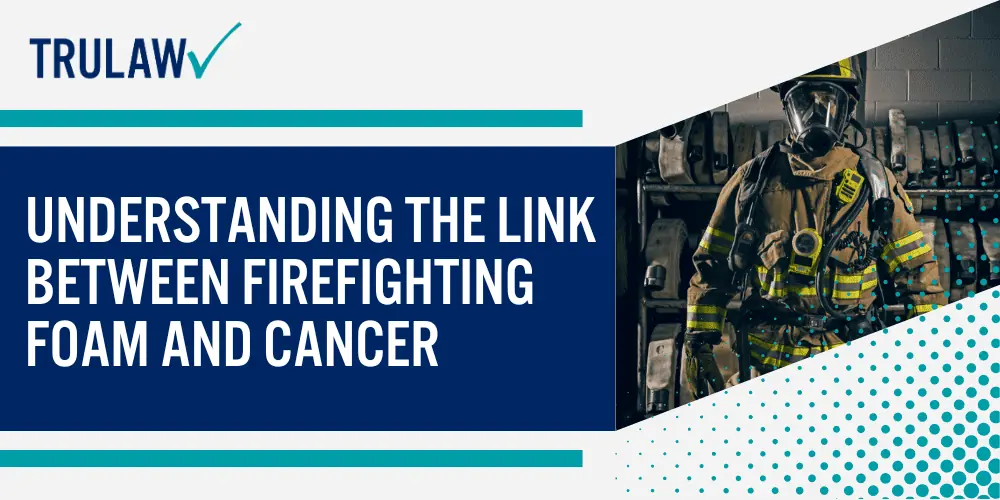
Firefighting foam has long been hailed as an effective tool in extinguishing fires, but recent studies have shed light on a concerning connection between firefighting foam exposure and cancer, particularly asbestos-related mesothelioma.
The chemicals present in these foams, such as per- and polyfluoroalkyl substances (PFAS) or so-called “forever chemicals,” have been identified as known carcinogens.
This section delves into the scientific evidence behind this alarming link, highlighting the risks faced by firefighters who regularly use firefighting foam and the potential for water contamination by PFAS chemicals from companies like Dupont.
Clear Connection: Studies reveal a strong association
Multiple studies have provided compelling evidence of a clear connection between military firefighters’ exposure to firefighting foam and cancer.
These investigations have consistently shown that individuals exposed to PFAS-containing foams, such as asbestos, are at an increased risk of developing various types of cancers.
The presence of PFAS chemicals in firefighting foam has become a significant concern due to their persistence in the environment and potential health effects, leading to AFFF class action lawsuits related to water contamination.
Known Carcinogens: Chemicals found in firefighting foam
The chemicals used in firefighting foam, including PFAS and asbestos, are classified as known carcinogens.
These substances have been linked to numerous adverse health effects, with cancer being one of the most concerning outcomes.
Exposure to PFAS and asbestos can lead to the development of different types of cancer, such as bladder cancer and other related malignancies.
Water contamination by PFAS and asbestos is a serious concern, and companies like Dupont, Chemours, 3M, and several others companies are being held accountable for their role in this issue.
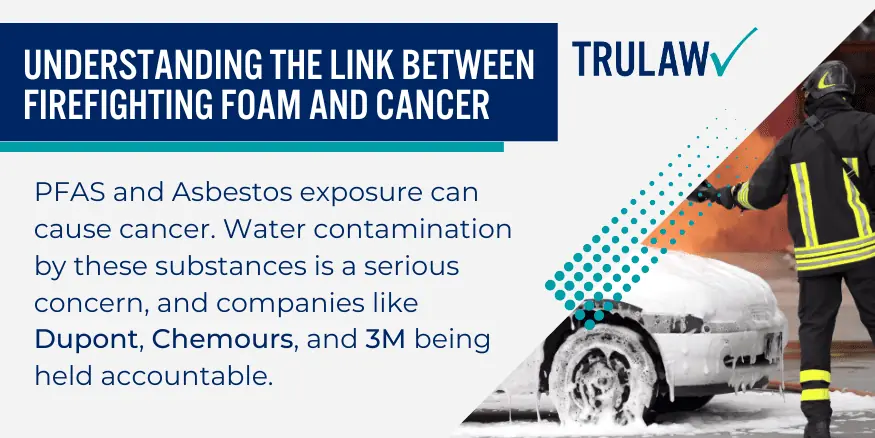
Higher Risk for Firefighters: Regular users face increased susceptibility
Firefighters, including veterans, frequently use firefighting foam and are particularly vulnerable to developing cancer, including asbestos-related diseases, due to their repeated exposure.
These brave individuals put their lives on the line every day to protect others from fire hazards; however, they unknowingly subject themselves to harmful chemicals, such as water contamination, that increase their risk of developing this life-threatening disease.
Seeking legal assistance from experienced lawyers can help firefighters affected by these issues.
The nature of firefighters’ work exposes them to direct contact with firefighting foam and potentially contaminated environments where these foams, containing asbestos and PFAS chemicals, have been used extensively.
The contamination can affect various sources, such as drinking water supplies or personal protective equipment (PPE).
This continuous exposure heightens the risk of cancer development, amplifying the urgency for further research and preventive measures in defense against these hazardous products.
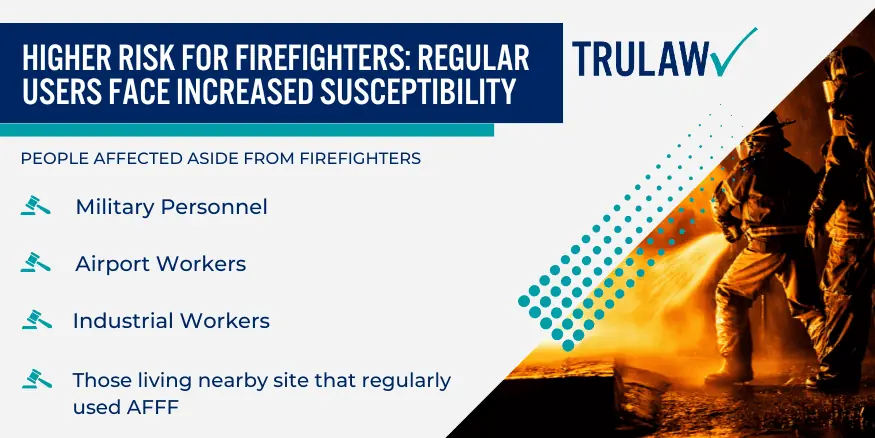
Unveiling the Mechanism: How firefighting foam can cause cancer?
The link between firefighter foam and cancer lies in the chemicals it contains, such as asbestos.
PFAS compounds found in these products can accumulate in the body over time, posing a threat to various organs and systems.
These substances have been linked to lawsuits due to their ability to disrupt hormone levels, interfere with immune system functioning, and cause DNA damage – all factors contributing to cancer development.
When firefighters are exposed to PFAS through firefighting foam, these chemicals enter their bloodstream and begin wreaking havoc on their bodies.
The long-lasting nature of PFAS means that even small amounts can accumulate over time, leading to significant health consequences down the line.
As a result, there has been an increase in lawsuits related to firefighter asbestos exposure and AFFF class action lawsuit cases.
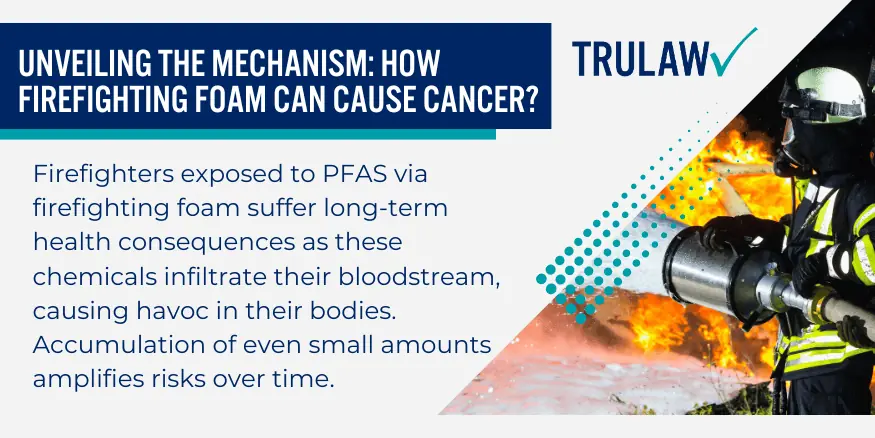
Urgent Need for Action: Protecting those who protect us
The evidence linking asbestos and PFAS chemicals in firefighting foam exposure to cancer lawsuits is too compelling to ignore.
It is crucial for governments, regulatory bodies, and fire departments worldwide to take immediate defense action in addressing this issue.
Steps must be taken to limit firefighters’ exposure to asbestos and PFAS chemicals by identifying safer alternatives or implementing better containment strategies during firefighting operations.
Regular monitoring of drinking water sources near areas where firefighting foam containing PFAS chemicals has been used extensively should be conducted.
This will help identify potential contamination risks from PFAS exposure and asbestos and allow for timely defense and remediation efforts.
Understanding the Impact of Firefighting Foam Cancer
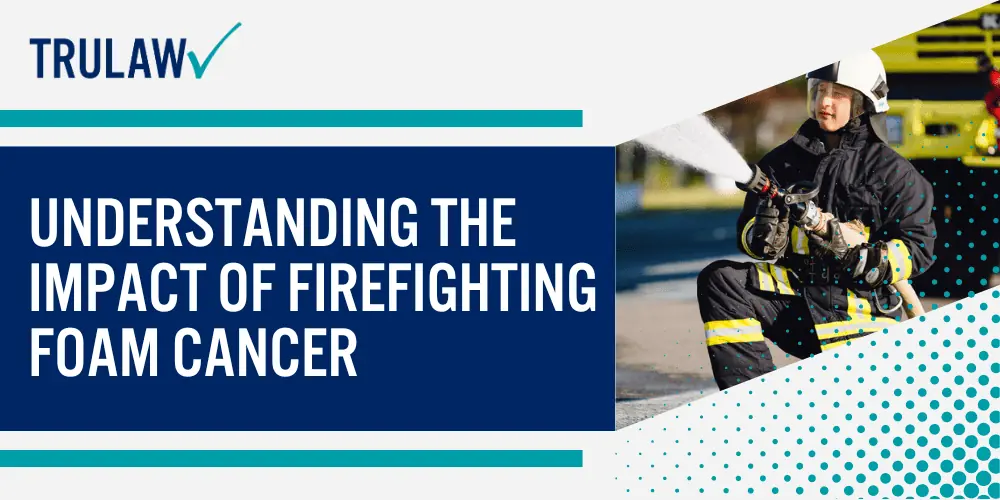
Devastating Consequences for Firefighters’ Lives
Firefighting foam cancer, including asbestos-related diseases, is a grave concern that poses significant risks to the lives of firefighters.
Exposure to certain chemicals present in firefighting foam, such as AFFF, can have devastating consequences on their health, leading to lawsuits and AFFF class action.
These brave individuals, who put their lives on the line to protect others, often face an uphill battle.
The physical toll of firefighting foam cancer, asbestos, cannot be understated.
Firefighters exposed to these harmful chemicals may develop various types of cancers, including but not limited to asbestos-related lung, bladder, and skin cancer.
These diseases can cause immense pain and suffering, leading to long and arduous treatment journeys for those affected by asbestos lawsuits.
Moreover, the emotional impact of firefighting foam cancers cannot be overlooked.
Firefighters battling cancer may experience feelings of fear, anxiety, and uncertainty about their future.
The mental strain they endure while grappling with a life-threatening illness can greatly affect their overall well-being.
Additionally, the new AFFF firefighting foam lawsuit, which includes concerns about asbestos, is adding to the legal complexities surrounding firefighting foam MDL.
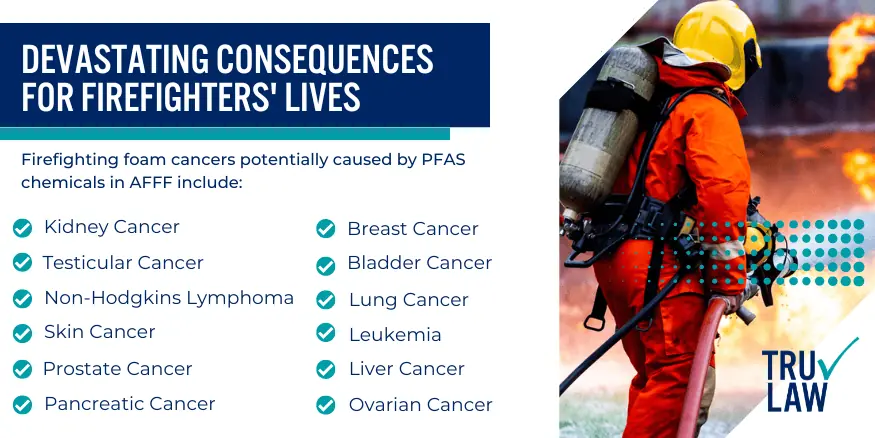
The Ripple Effect: Beyond Individuals
The repercussions of asbestos lawsuits extend far beyond individual firefighters themselves; they also affect families and communities.
When a firefighter falls victim to this disease, their loved ones are thrust into an overwhelming situation filled with worry and stress.
The consequences of firefighting foam cancer also impact AFFF class action plaintiffs.
Families often find themselves navigating uncharted territories as they support their afflicted firefighters through treatments and recovery from firefighting foam cancers.
Emotional turmoil becomes a constant companion as they witness firsthand the challenges faced by their loved ones in the new AFFF cancer lawsuit and trials.
Firefighting foam class action lawsuit is another legal avenue for seeking justice.
Communities also bear witness to the impact of firefighting foam cancer and asbestos lawsuits.
These courageous individuals, plaintiffs, play vital roles in society’s safety net, ensuring our homes and neighborhoods are protected from fire hazards.
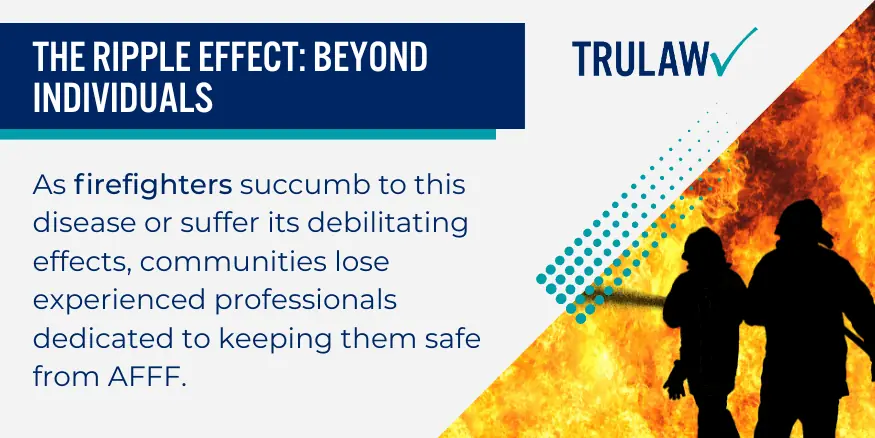
Exploring Wide-Ranging Effects
Understanding the wide-ranging effects of firefighting foam cancer, asbestos exposure, and lawsuits is crucial in comprehending its gravity fully.
This insidious disease not only affects the lives of firefighters but also disrupts the fabric of their families and communities, leading to class action litigation.
Firefighters battling firefighting foam cancers often face financial hardships due to medical bills, lost wages during treatment, and ongoing healthcare expenses.
The burden of these financial challenges can exacerbate the already stressful situation they find themselves in, adding another layer of adversity to overcome.
In light of the new AFFF firefighting foam lawsuits, the impact of asbestos in firefighting foam class action lawsuits is becoming more evident.
The toll on mental health in lawsuits cannot be ignored.
Firefighters may struggle with depression, anxiety, and post-traumatic stress disorder (PTSD) as they grapple with their diagnosis and its implications.
This emotional strain can further hinder their ability to cope with the physical demands of firefighting foam cancer trials, affecting the plaintiffs.
Current Use of Firefighting Foam: Is it Still in Practice?
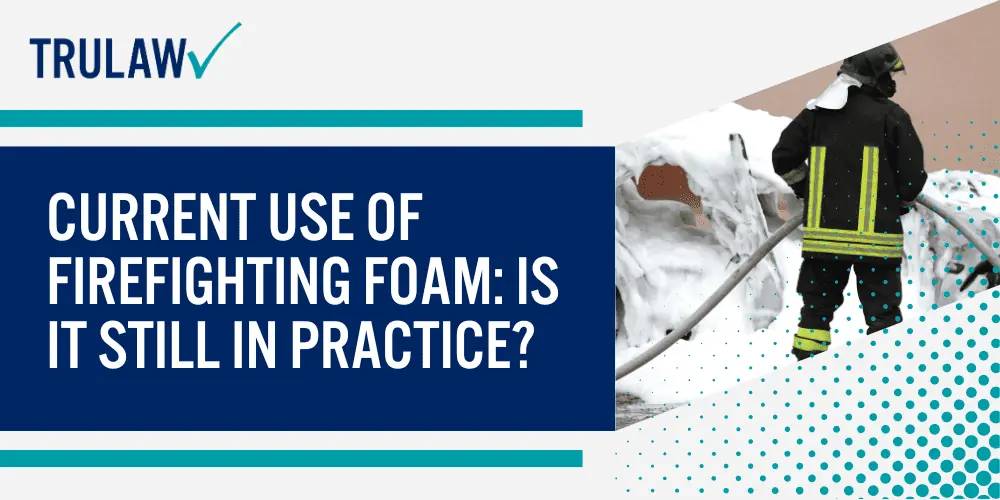
Despite the risks, firefighting foam (AFFF) is still used in certain situations today.
Some fire departments continue to rely on this type of extinguishing agent, although regulations regarding its use vary across different jurisdictions.
Firefighting foam, also known as forming foam or aqueous film-forming foam (AFFF), is a specialized type of foam that is designed to suppress and extinguish fires involving flammable liquids.
It works by creating a foam blanket covering the fuel surface, preventing oxygen from reaching the fire and suppressing the release of flammable vapors.
While water can be effective in fighting some fires, it may not be sufficient for combating fires involving flammable liquids such as gasoline or oil.
In certain cases, individuals affected by these fires may choose to pursue legal action through a class action lawsuit or trial in an MDL.
One reason why AFF foam continues to be used today is its effectiveness in tackling certain types of fires.
In situations where there is a risk of flammable liquid spills or industrial accidents involving hazardous materials, firefighters need a reliable method to quickly and effectively control the fire.
AFF foam provides an added layer of protection by smothering the flames and preventing re-ignition.
This is particularly important in light of the recent firefighting foam cancer lawsuit and the formation of an MDL for a class action related to AFF foam.
Fire departments dealing with high-risk environments, such as airports, chemical plants, and oil refineries, often rely on AFF foam due to its unique properties.
These facilities have specific requirements for fire suppression systems that take into account the potential hazards they face.
The use of AFF foam ensures that these industries can effectively respond to emergencies and minimize the risk of catastrophic incidents.
In some cases, lawsuits and class action trials have arisen regarding the use of AFF foam.
However, it’s important to note that the use of AFFF firefighting foam has come under scrutiny in recent years due to concerns about its environmental impact and potential health risks.
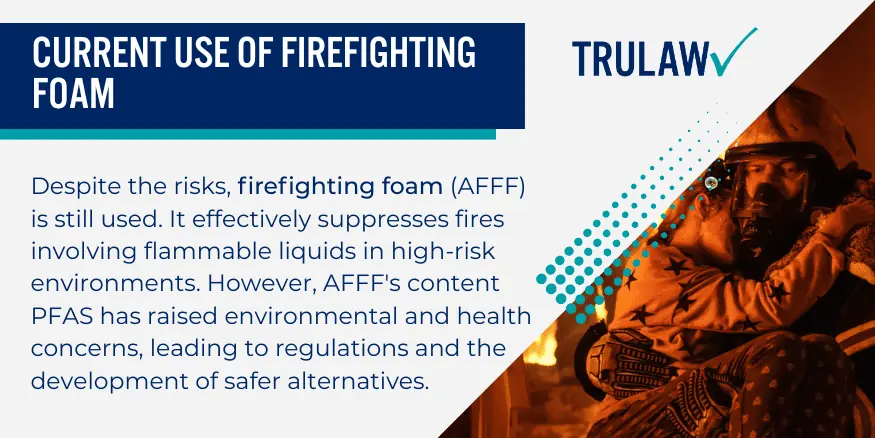
A major issue with traditional firefighting foams is their content of per- and polyfluoroalkyl substances (PFAS), which are chemicals known for their persistence in the environment and potential adverse health effects.
This scrutiny has led to lawsuits and class action trials.
Regulations regarding the use of firefighting foam, including AFFF, vary across different jurisdictions.
Some countries and states have implemented stricter regulations to limit or ban the use of certain types of firefighting foam containing PFAS.
These measures aim to protect both firefighters and the environment from potential harm.
However, it is worth noting that alternatives to PFAS-containing foams, such as fluorine-free foams (AFFFs), are being developed.
These AFFFs offer similar fire suppression capabilities without the associated environmental and health concerns.
In some cases, these regulations have resulted in lawsuits and trials, leading to the creation of MDLs (multidistrict litigation) to handle related legal matters.
Health Risks of Firefighting Foam Exposure:
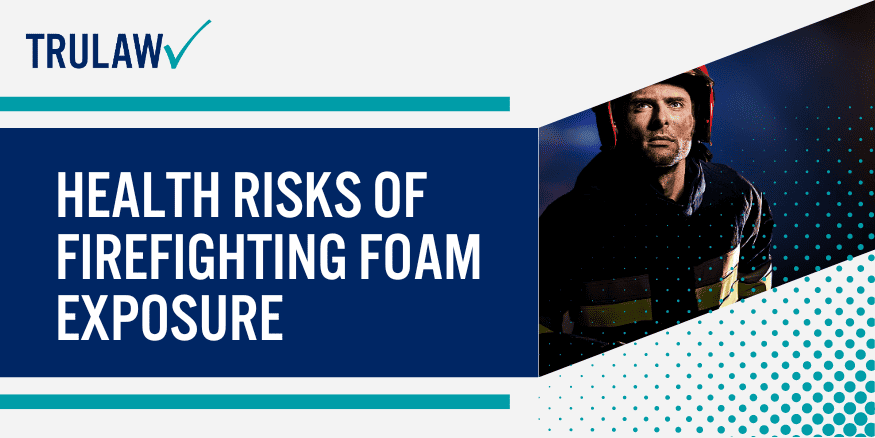
Firefighters, especially those in the military or working in fire departments, face a range of health risks due to their exposure to firefighting foam.
This section highlights the hazards associated with such exposure, including respiratory issues, skin problems, organ damage, an increased risk of cancer, and the potential for lawsuits, trials, and class action suits related to AFFF.
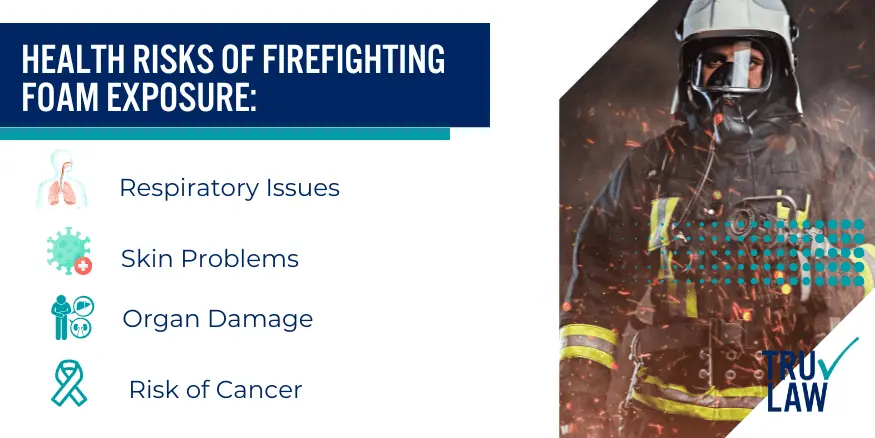
Respiratory Issues:
One of the primary health concerns linked to toxic firefighting foam exposure is respiratory problems.
Inhaling the chemicals present in these AFFF foams can lead to various respiratory conditions, such as asthma and chronic obstructive pulmonary disease (COPD).
The toxic chemicals released from the AFFF foam can irritate the airways and cause inflammation, leading to breathing difficulties over time.
Military firefighters and those working in fire departments are particularly susceptible to these risks due to their frequent exposure during training exercises and emergency situations.
In some cases, this has led to lawsuits and trials, resulting in an MDL.
Exposure to firefighting foam, such as AFFF, can result in long-term lung damage.
The chemicals present in these foams may cause fibrosis or scarring of lung tissue, leading to reduced lung capacity and a higher risk of developing serious respiratory illnesses later in life.
It is crucial for firefighters involved in foam-related fires to wear appropriate respiratory protective equipment to mitigate the risk.
This is especially important given the potential for lawsuits and the ongoing MDL trial related to AFFF exposure.
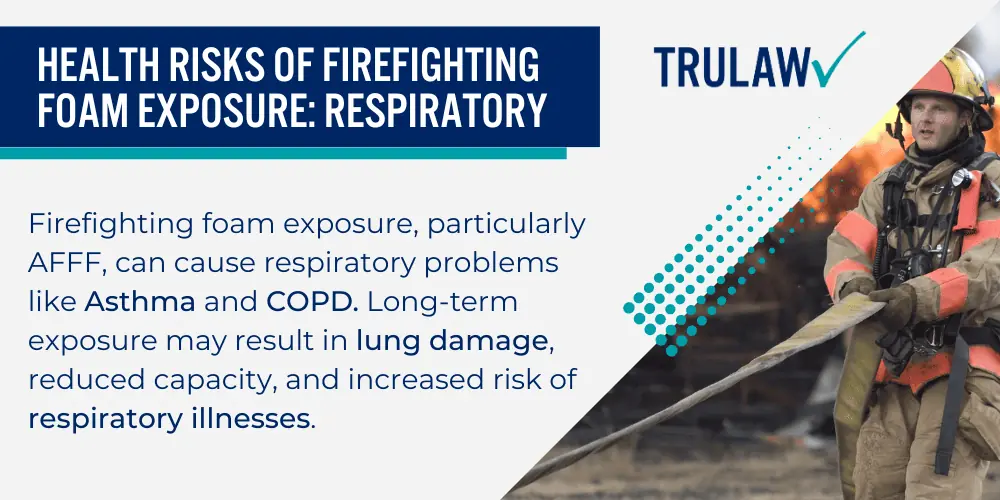
Skin Problems:
In addition to respiratory issues, firefighters exposed to firefighting foam in the AFFF lawsuit may experience skin problems.
Direct contact with the foam can cause irritation, redness, itching, and even chemical burns on the skin.
Prolonged or repeated exposure without proper decontamination increases the likelihood of developing more severe dermatological conditions during the trial and MDL.
The chemicals found in firefighting foams, such as AFFF, can strip away natural oils from the skin’s surface, leading to dryness and cracking.
This causes discomfort and weakens the skin’s barrier function, making it more susceptible to infections and other external irritants.
Firefighters should prioritize thorough decontamination after any exposure to firefighting foam to minimize the risk of skin-related health issues.
This is especially important during a trial or MDL lawsuit involving AFFF.
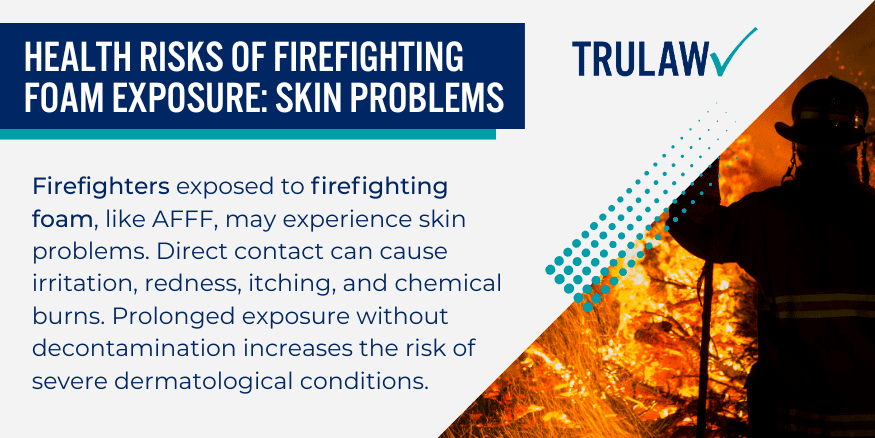
Organ Damage:
The health risks associated with firefighting foam exposure, including the use of AFFF, extend beyond the respiratory system and skin.
Studies have shown a correlation between exposure to certain firefighting foam ingredients and liver damage, leading to a potential lawsuit.
These chemicals can accumulate in the liver over time, causing inflammation and impaired liver function, which may be addressed during a trial.
Furthermore, some components of firefighting foams, such as AFFF, are known to affect kidney function.
Prolonged exposure to AFFF may contribute to the development of conditions such as kidney disease or hypertension.
Firefighters should be aware of these potential risks and undergo regular medical check-ups to monitor their organ health, especially in the context of a lawsuit or trial.
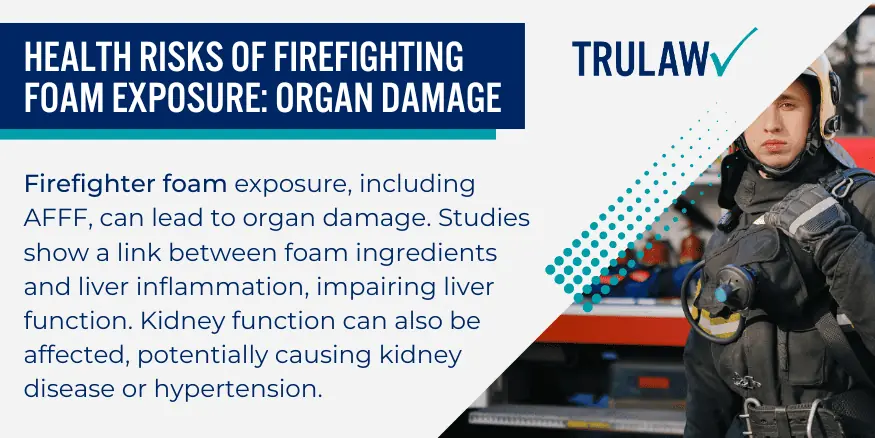
Risk of Cancer:
Perhaps one of the most concerning health risks associated with firefighting foam exposure is an increased risk of cancer.
Studies have identified several harmful and toxic substances in these foams that are classified as carcinogens, such as per- and polyfluoroalkyl substances (PFAS) like perfluorooctane sulfonate (PFOS) and perfluorooctanoic acid (PFOA).
This has led to numerous lawsuits and trials related to the harmful effects of AFFF.
Firefighters exposed to PFAS-containing foams, such as AFFF, may face a higher likelihood of developing various types of cancer, including bladder, kidney cancer, prostate, testicular, pancreatic, and breast cancer.
The risk is particularly elevated when there is prolonged exposure or inadequate protective measures during firefighting operations.
In such cases, firefighters may be at risk of a lawsuit, trial, et al.
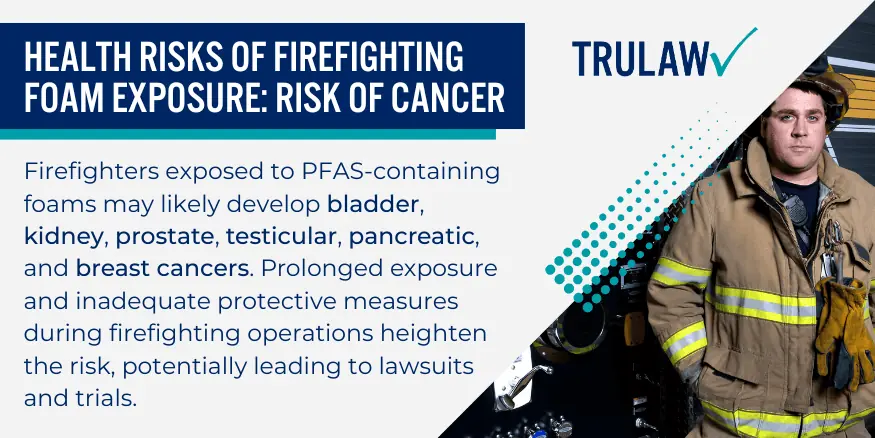
Working with a Personal Injury Lawyer for Firefighting Foam Cancer Cases
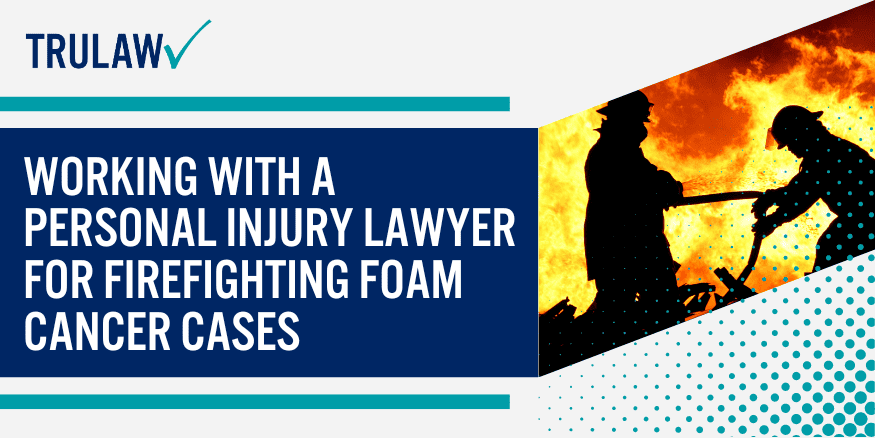
Firefighting foam cancer cases can be complex and challenging to navigate, which is why it is crucial to work with a personal injury lawyer who specializes in handling such cases.
These legal professionals are experienced in providing guidance and support to affected firefighters seeking compensation for their injuries during the trial.
By partnering with an attorney who understands the intricacies of firefighting foam cancer lawsuit, you can have peace of mind knowing that your case is in capable hands.
The Expertise of Personal Injury Lawyers
Personal injury lawyers possess extensive knowledge and expertise in dealing with lawsuits related to firefighting foam cancer.
They are well-versed in the legal aspects surrounding these types of claims and understand the unique challenges faced by firefighters during trials.
With their specialized skills, they can offer valuable advice on how to proceed with your case, ensuring that you take the necessary steps toward obtaining compensation for your injuries caused by AFFF.
These attorneys have a deep understanding of the various legal options available to firefighters affected by firefighting foam cancer.
They can provide you with information about personal injury cases specific to firefighters, including those involving municipal water contamination or mass tort lawsuits.
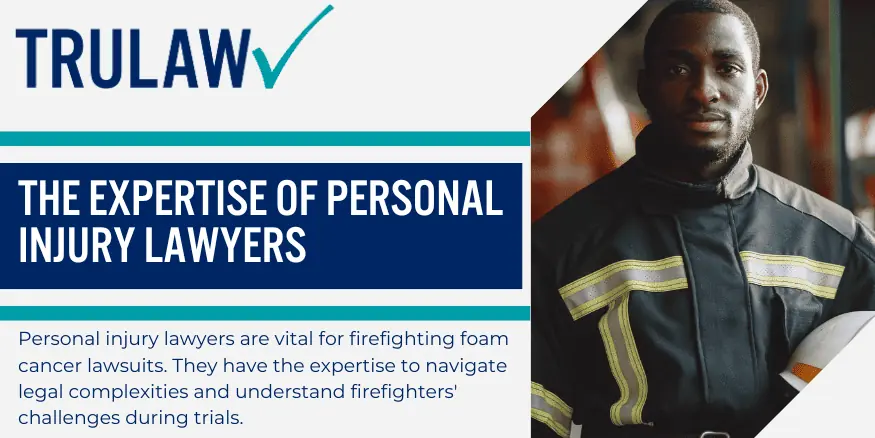
Navigating Complex Legal Processes
One of the primary advantages of working with a personal injury lawyer in firefighting foam cancer cases is their ability to navigate complex legal processes on your behalf.
Lawsuits often require thorough investigation, evidence collection, and expert testimonies for AFFF.
An experienced AFFF attorney will efficiently handle these tasks while ensuring that all necessary documentation is properly filed within relevant deadlines.
Moreover, personal injury lawyers understand the importance of building a strong case based on solid evidence.
They will work closely with you to gather all pertinent information related to your exposure to firefighting foam chemicals (AFFF) and their connection to your cancer diagnosis.
This may involve reviewing medical records, interviewing witnesses, consulting occupational health or toxicology experts, and collecting any other evidence that strengthens your claim.
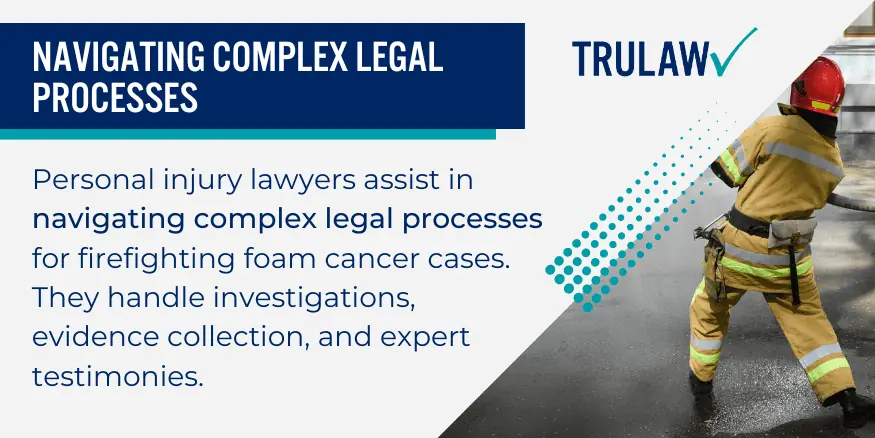
Fighting for Justice
Working with a skilled personal injury lawyer is crucial in fighting for justice and seeking fair compensation for firefighters affected by exposure to firefighting foam chemicals, such as AFFF.
These dedicated attorneys will tirelessly advocate for your rights, ensuring that responsible parties are held accountable for their actions or negligence.
In cases involving AFFF firefighting foam lawsuits, a personal injury lawyer may recommend pursuing a class action lawsuit.
This type of legal action, known as the firefighting foam MDL, allows a group of individuals affected by the foam to join forces and seek compensation collectively.
Doing so can increase your chances of obtaining a favorable outcome while sharing the legal costs and resources with others in similar situations.
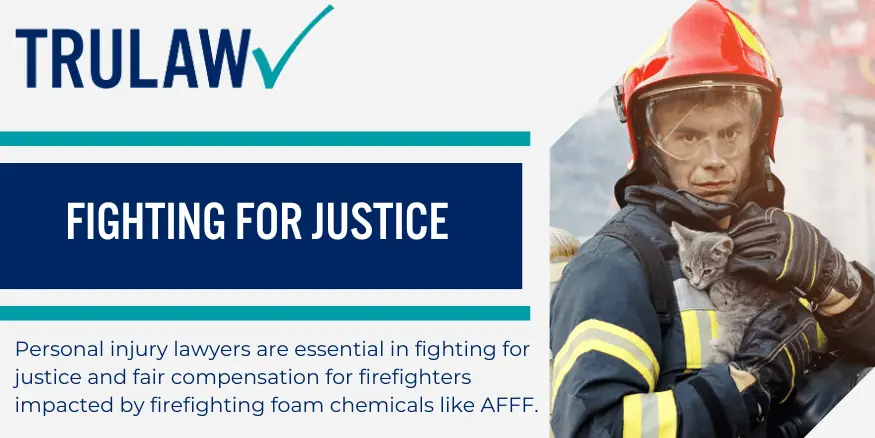
Settlement Amounts in Firefighting Foam Lawsuits
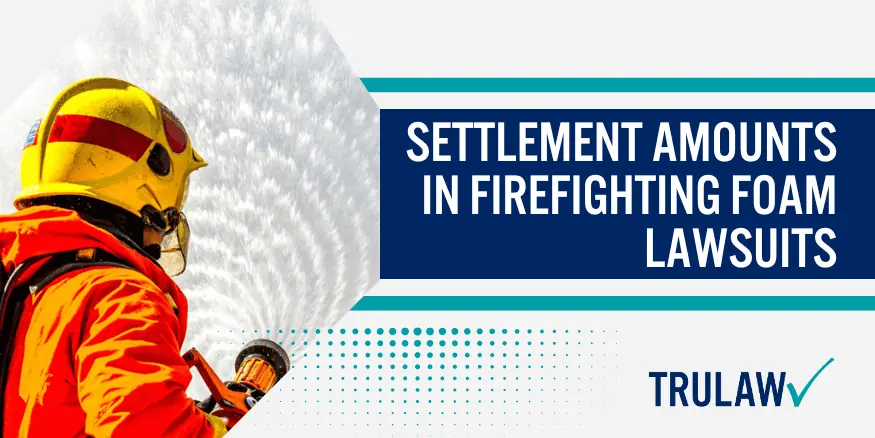
Eligibility for Financial Settlements
Firefighters impacted by firefighting foam cancer may be eligible for financial settlements.
These settlements serve as a form of compensation for the physical and emotional toll that individuals have endured due to exposure to harmful chemicals present in AFFF.
While each case is unique, those affected can seek justice through legal channels and potentially receive financial support.
What Are the Factors that Influence Settlement Amounts?
The settlement amounts in firefighting foam lawsuits vary depending on several factors, including the extent of medical expenses incurred by the individual.
This includes costs related to diagnosis, treatment, medication, and ongoing care.
Lost wages due to inability to work or reduced earning capacity are also considered when determining the settlement amount.
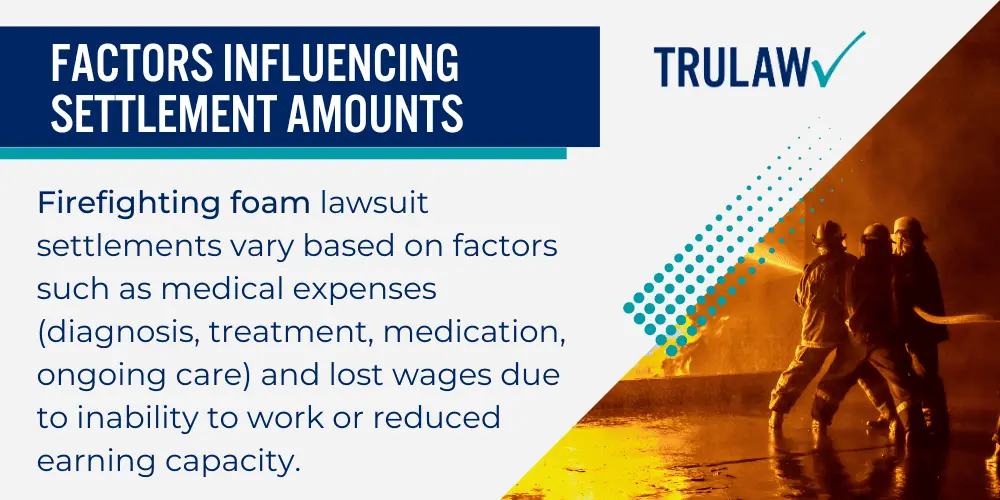
Substantial Compensation from Successful Lawsuits
Successful lawsuits filed by firefighters impacted by firefighting foam cancer, known as AFFF, have resulted in substantial compensation for affected individuals.
These AFFF cancer cases have shed light on the negligence of manufacturers who failed to adequately warn about the potential health risks associated with their products.
As a result, affected firefighters have been awarded significant financial compensation as a means of rectifying the harm caused by AFFF.
In some instances, global settlements have been reached in firefighting foam lawsuits where a lump sum is distributed among all eligible claimants, including those affected by AFFF firefighting foam, based on predetermined criteria.
This approach ensures that all affected parties, including fire departments, receive a fair share of compensation without having to go through individual trials.
What Are the Potential Settlement Amounts in Firefighting Foam Cancer Cases?
When evaluating damages suffered by an individual, it is crucial to take into account both economic and non-economic damages, including those related to AFFF firefighting foam.
This is especially relevant for fire department personnel who may be affected by firefighting foam lawsuits.
Here are the three (3) Economic Damages:
1. Medical Expenses: The total amount spent on medical treatments, surgeries, hospital stays, medications, rehabilitation services, AFFF, and any other healthcare-related expenses.
2. Lost Wages: The income lost due to being unable to work during treatment or recovery periods, et al., can be a significant financial burden for individuals involved in firefighting foam lawsuits.
The use of AFFF firefighting foam has led to numerous legal cases, and those affected may experience prolonged periods of time where they are unable to work and earn a living.
3. Reduced Earning Capacity: If the individual’s ability to earn a living has been permanently affected by the illness, future earning potential may also be considered.
This is especially relevant in cases where the individual’s earning capacity has been impacted by the use of AFFF firefighting foam.
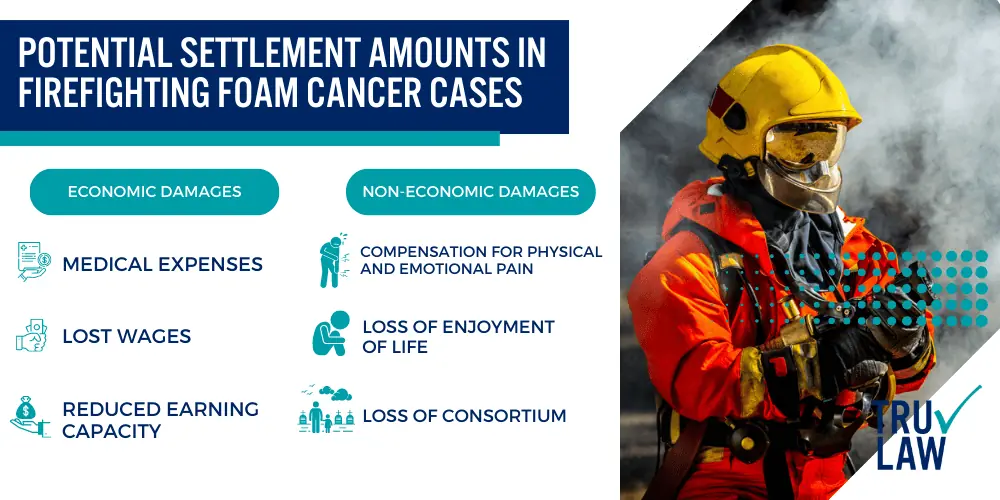
Here are the three (3) Non-economic Damages:
1. Compensation for physical pain, emotional distress, and mental anguish caused by firefighting foam cancer is available through the AFFF lawsuit.
2. Loss of Enjoyment of Life: Compensation for the inability to engage in activities or hobbies that were once enjoyed due to the illness AFFF et al.
3. Loss of Consortium: In some cases, compensation may be awarded to spouses or partners for the loss of companionship, support, and intimacy resulting from the illness et al.
This compensation may be provided through the assistance of the AFFF program.
It is important to note that each case involving AFFF is unique, and settlement amounts can vary significantly based on individual circumstances.
Factors such as the severity of illness, impact on daily life, age, and overall health are taken into account when determining compensation.
Medical Treatment and Insurance Coverage for AFFF Cancer Patients
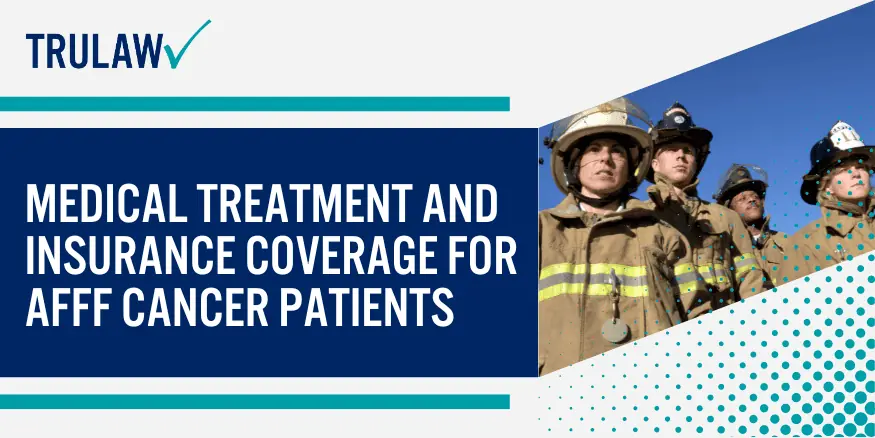
Firefighters diagnosed with firefighting foam cancer, also known as AFFF cancer, often require specialized medical treatment to manage their condition effectively.
These brave individuals put their lives on the line to protect us, and it is crucial that they have access to the healthcare services they need.
Specialized Medical Treatment Options
Specialized medical treatment for this aggressive form of cancer is essential.
It may involve a multidisciplinary approach with AFFF oncologists, radiologists, and surgeons who specialize in treating this specific form of cancer.
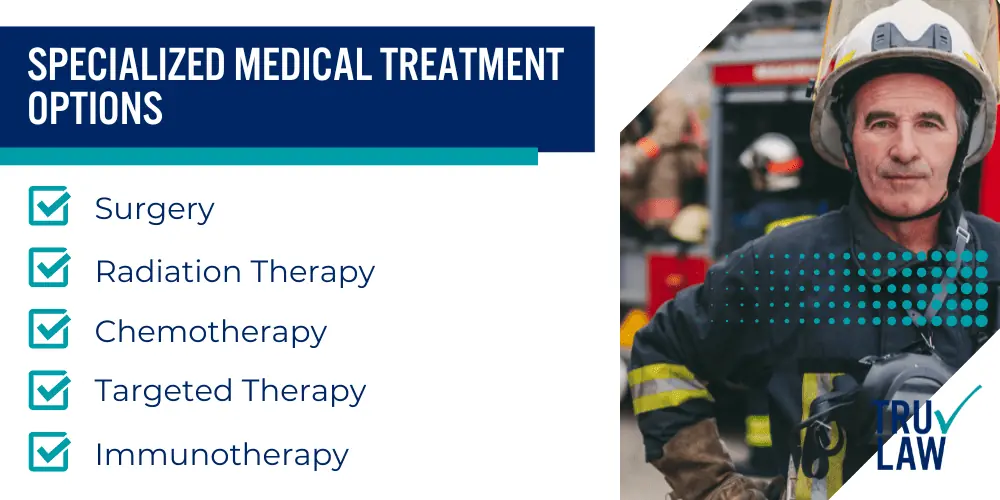
Here are the five (5) treatment options that may include AFFF:
1. Surgery: In some cases, surgical intervention may be necessary to remove tumors or affected tissue caused by exposure to AFFF firefighting foam.
Surgeons skilled in handling AFF-related cancers can perform procedures tailored to each patient’s needs.
2. Radiation Therapy: Radiation therapy utilizes high-energy X-rays or other particles to target and kill cancer cells.
It can be an effective treatment option for controlling tumor growth or reducing pain associated with metastasis.
Additionally, radiation therapy has been proven to be highly effective in combating cancer, particularly when used in conjunction with other treatment methods such as chemotherapy or targeted therapy.
The use of advanced firefighting foams (AFFF) has also shown promise in enhancing the effectiveness of radiation therapy by improving the delivery of radiation to cancer cells while minimizing damage to healthy tissues.
3. Chemotherapy: Chemotherapy involves powerful drugs, such as AFFF, that help destroy cancer cells throughout the body.
It is often used when the disease has spread beyond its original site.
4. Targeted Therapy: Targeted therapy uses drugs designed to specifically target certain genetic mutations or proteins present in cancer cells.
These AFFF therapies aim to disrupt the growth and spread of cancer while minimizing damage to healthy cells.
5. Immunotherapy: Immunotherapy stimulates a patient’s immune system to recognize and attack AFFF-related cancer cells more effectively.
This innovative approach has shown promising results in various types of cancers, including AFFF-related cancers.
Importance of Insurance Coverage
Insurance coverage is vital in ensuring firefighters diagnosed with firefighting foam cancer can access necessary treatments without financial burden.
Understanding insurance policies and advocating for comprehensive AFFF coverage is essential to alleviate concerns about medical bills and receive the best possible care.
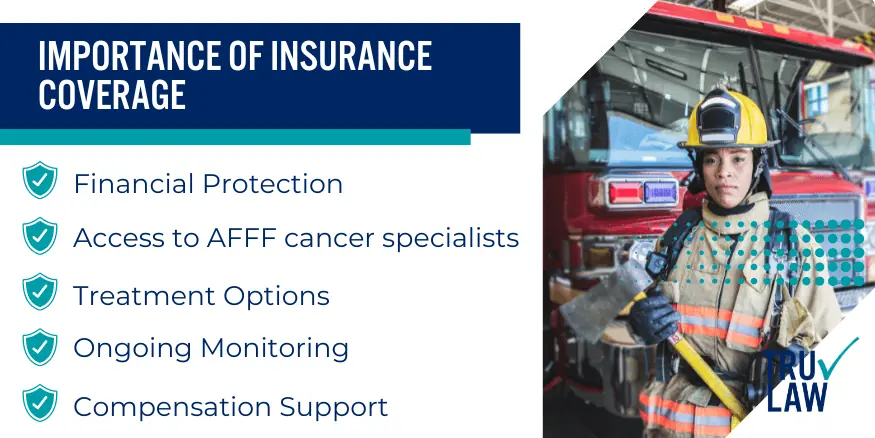
Here are the five (5) reasons why insurance coverage matters:
1. Financial Protection: Cancer treatments can be expensive, often involving multiple doctor visits, diagnostic tests, surgeries, and medications.
Insurance coverage helps protect patients from overwhelming medical bills and ensures they can focus on their recovery rather than AFFF stress.
2. Access to AFFF cancer specialists is crucial for firefighters diagnosed with the condition.
Comprehensive insurance coverage ensures unrestricted consultation with experienced experts in the field.
3. Treatment Options: Different insurance policies may cover different AFFF treatment options.
With adequate coverage, firefighters have more flexibility in choosing the most appropriate treatments based on their individual health conditions and preferences.
4. Ongoing Monitoring: Regular check-ups and monitoring are crucial for detecting any recurrence or potential complications associated with AFFF cancer.
Insurance coverage enables firefighters to undergo necessary follow-up appointments, ensuring their health and safety remain a priority.
5. Compensation Support: In cases where firefighting foam manufacturers have faced lawsuits or settlements due to the harmful effects of AFFF exposure, insurance coverage may provide compensation support for affected individuals.
AFFF exposure has led to lawsuits and settlements against manufacturers, but insurance can offer compensation support for those affected.
Understanding the intricacies of insurance policies, especially those related to firefighting foam cancer, can be challenging.
However, it is worth investing time and effort into exploring available options thoroughly to minimize financial burdens for firefighters diagnosed with AFFF.
By being well-informed about insurance benefits, firefighters can navigate through the complexities of medical treatments.
Environmental Impact: PFAS Chemicals and Firefighting Foam
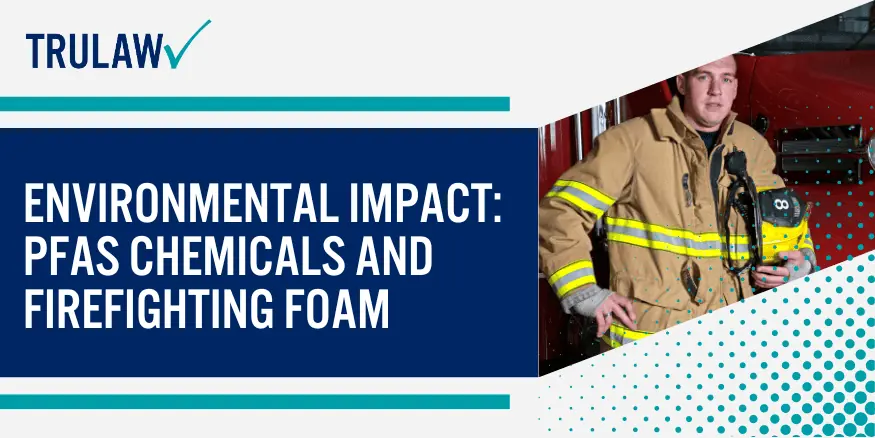
Firefighting foam, also known as AFFF (aqueous film-forming foam), is an essential tool in combating fires.
However, it contains dangerous chemicals known as PFAS (per- and polyfluoroalkyl substances), which have significant environmental implications.
PFAS chemicals, including the widely used AFFF, are persistent synthetic compounds that pose a serious threat to ecosystems.
Due to their fire-resistant properties, these chemicals do not break down easily and can accumulate over time, leading to bioaccumulation.
This puts aquatic organisms, such as fish and other wildlife, at risk of exposure to high levels of PFAS through contaminated water sources.
Improper disposal or accidental release of firefighting foam, specifically AFFF, can have severe consequences for water systems.
When released into the environment, PFAS chemicals in AFFF can contaminate groundwater and surface water, including lakes, rivers, and streams.
Once these chemicals enter the water supply, they can spread rapidly and affect not only local communities but also larger regions dependent on those water sources.
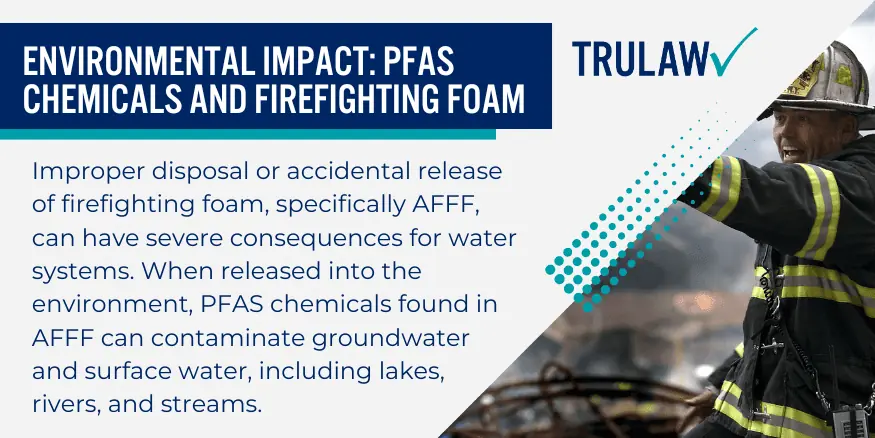
The military has been one of the major users of firefighting foam, specifically AFFF, due to its effectiveness in extinguishing fuel-based fires.
Consequently, military bases have become hotspots for PFAS contamination.
For years, military training exercises involving the use of AFFF led to the accumulation of PFAS in soil and groundwater near these installations.
The extent of contamination has raised concerns about the health risks faced by both military personnel and nearby communities.
One well-known case involving PFAS contamination is associated with Dupont’s use of AFFF chemicals in manufacturing processes.
The company’s negligence resulted in widespread pollution across various locations worldwide.
The harmful effects on human health caused by exposure to certain PFAS chemicals, including AFFF, have led to class-action lawsuits against Dupont and other companies responsible for the contamination.
To mitigate the Firefighting Foam Health Effects and environmental impact of PFAS chemicals, efforts are being made to develop alternative firefighting foams that do not contain these dangerous substances.
These “PFAS-free” foams aim to provide effective fire suppression while minimizing the risk of water contamination.
However, transitioning away from PFAS-containing foam requires careful consideration of performance and safety aspects to ensure an effective replacement with AFFF.
Finding the Right Firefighting Foam Cancer Lawyer for Your Case
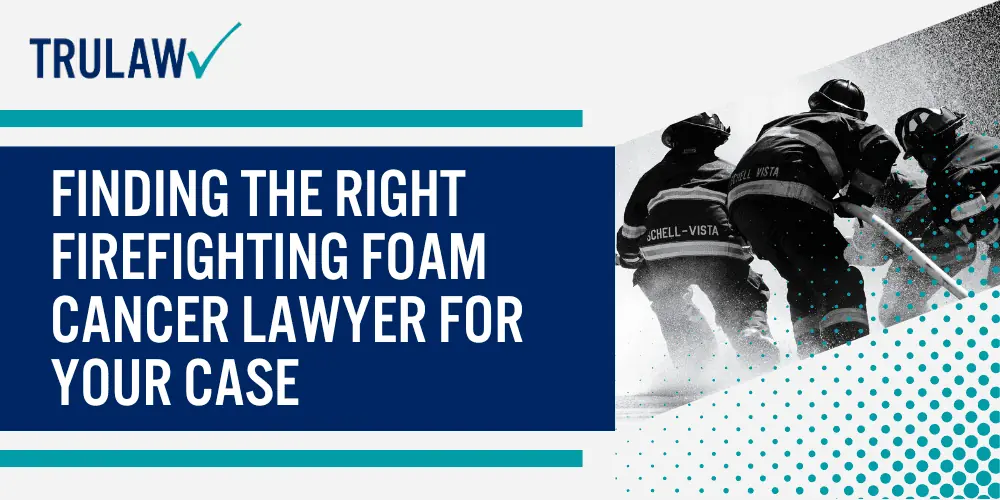
Choosing the right lawyer is crucial in dealing with the complex and challenging legal process.
Having an experienced and knowledgeable attorney by your side can maximize your chances of success in your case.
Make sure to hire an attorney who is well-versed in AFFF to ensure the best possible outcome.
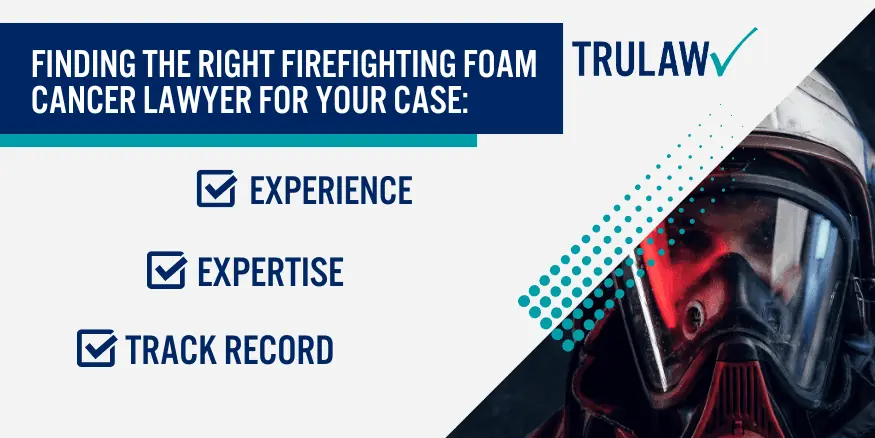
Here are the three (3) factors to consider when choosing a lawyer:
- Experience
- Expertise
- Track Record
1. Experience
One of the most important factors to consider when selecting a lawyer for your firefighting foam cancer case is their experience in handling similar cases.
Look for attorneys who specialize in personal injury or product liability law, as they are likely to have the necessary expertise and knowledge in this area.
Trulaw has been representing clients in various types of personal injury cases, including those related to AFFF firefighting foam cancer.
Our extensive experience gives clients insight into the complexities of these cases and allows them to provide effective legal assistance.
2. Expertise
Alongside experience, it is essential to find a lawyer who has expertise specifically related to firefighting foam cancer cases.
These cases involve unique challenges and require an understanding of the science behind the illness and its connection to exposure to firefighting foam chemicals.
A specialized lawyer will be familiar with different types of firefighting foams, including AFFF, used and their potential health risks.
They will know how to navigate through medical records, scientific evidence, and expert testimonies relevant to proving the causation between exposure to AFFF and cancer development.
3. Track Record
Take some time to research the track record of potential lawyers or law firms you are considering.
Look for information on their past successes in handling similar cases or securing significant settlements or verdicts for their clients.
Client testimonials can also provide valuable insights into their reputation and level of client satisfaction with AFFF.
Positive feedback from previous clients can give you confidence in their ability to handle your case effectively with AFFF.
Maximizing Your Chances of Success
Finding the right AFFF cancer lawyer is just the first step.
To maximize your chances of success in your firefighting foam cancer case, it is essential to work closely with your legal team and provide them with all the AFFF information they need.

Here are the three (3) steps you can take to maximize your chances of success:
- Free Consultation
- Court Proceedings
- Support for You and Your Loved Ones
1. Free Consultation
Many lawyers offer free initial consultations, allowing you to discuss your case and evaluate whether they are the right fit for you.
Take advantage of these consultations to ask questions about their experience, expertise, and approach to handling cases like yours.
During this consultation, be prepared to provide a brief overview of your situation and any relevant details about your AFFF.
This will help the lawyer assess the viability of your claim and determine how they can assist you with your AFFF.
2. Court Proceedings
A skilled lawyer will guide you through every stage of court proceedings, ensuring that all necessary documents are filed correctly and within deadlines.
They will represent your interests during hearings, negotiations, and, if required, trial.
Your lawyer will also handle the AFFF discovery process, which involves gathering evidence from both parties involved in the case.
This may include medical records, firefighting foam manufacturing data, exposure history documentation, witness statements, and expert opinions.
3. Support for You and Your Loved Ones
Dealing with firefighting foam cancer can be emotionally challenging not only for you but also for your loved ones.
A compassionate lawyer understands this and provides support throughout the legal process.
Having a supportive legal team by your side can alleviate some of the stress associated with pursuing a lawsuit.
They should communicate clearly with you about each step of the AFFF case while addressing any concerns or questions you may have along the way.
Conclusion: Understanding the Impact of Firefighting Foam Cancer
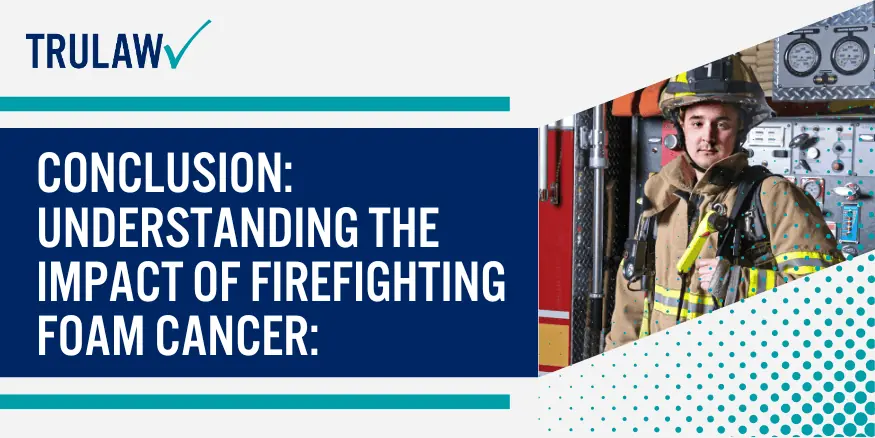
In conclusion, it is crucial to understand the impact of firefighting foam cancer and its implications on individuals and communities.
The link between firefighting foam (AFFF) and cancer has been extensively studied, revealing significant health risks associated with exposure to these chemicals.
The use of AFFF firefighting foam is still prevalent in many fire suppression operations, despite the known risks.
This raises concerns about the safety measures taken to protect firefighters and other personnel who come into contact with these AFFF substances.
Exposure to firefighting foam, specifically AFFF, can lead to various health issues, including an increased risk of developing cancer.
It is essential for individuals who have been exposed to AFFF to seek medical attention promptly and understand their legal rights in such cases.
Working with a personal injury lawyer specializing in AFFF firefighting foam cancer cases can be instrumental in pursuing justice and compensation.
These lawyers possess extensive knowledge and experience in handling similar cases, ensuring that victims receive proper representation throughout the legal process.
Settlement amounts in firefighting foam lawsuits vary depending on several factors, including the severity of the illness, medical expenses incurred, lost wages, pain and suffering endured, and other relevant considerations.
Consulting with a qualified attorney can help AFFF victims determine an appropriate settlement amount for their specific circumstances.
Comprehensive and tailored medical treatment is crucial for those affected by AFFF cancer.
Insurance coverage is vital to ensure that patients receive necessary treatments without financial burdens.
Understanding insurance policies related to firefighting foam exposure, such as AFFF, can help individuals navigate this complex landscape effectively.
The environmental impact of PFAS chemicals used in firefighting foam, such as AFFF, cannot be overlooked either.
These substances have been found to contaminate water sources, soil, and wildlife habitats.
Addressing this issue requires concerted efforts from regulatory bodies, industries using these foams, and local communities.
Finding the right firefighting foam cancer lawyer specializing in AFFF is crucial for achieving favorable outcomes in legal battles against manufacturers or entities responsible for exposure incidents.
Research reputable attorneys specializing in AFFF and seek initial consultations to assess their expertise and compatibility with your case.
TRULAW is the top choice for AFFF firefighting foam cancer lawsuits, offering numerous benefits to clients seeking justice.
With our expertise and experience, TRULAW’s highly skilled attorneys deeply understand these cases’ complexities.
We stay updated on scientific research, industry practices, and regulations related to AFFF, ensuring comprehensive representation.
Clients receive personalized attention throughout the process, as we at TRULAW value open communication and tailored legal strategies.
Our strong advocacy is evident in our track record of successful outcomes and substantial compensation secured for clients.
TRULAW goes beyond individual cases by advocating for industry changes and government regulations to prevent future harm.
Our risk-free consultation allows clients to discuss their cases and evaluate their strengths.
By choosing TRULAW, clients gain access to a dedicated team that will fight tirelessly on their behalf, offering unmatched expertise, personalized attention, and maximum compensation.
TRULAW is committed to achieving justice and providing support during this challenging time.
Get in touch with us.
AFFF Lawsuit Frequently Asked Questions
-
The link between firefighter foam and cancer lies in the chemicals it contains, such as asbestos.
PFAS compounds found in these products can accumulate in the body over time, posing a threat to various organs and systems.
These substances have been linked to lawsuits due to their ability to disrupt hormone levels, interfere with immune system functioning, and cause DNA damage – all factors contributing to cancer development.
When firefighters are exposed to PFAS through firefighting foam, these chemicals enter their bloodstream and begin wreaking havoc on their bodies.
The long-lasting nature of PFAS means that even small amounts can accumulate over time, leading to significant health consequences down the line.
As a result, there has been an increase in lawsuits related to firefighter asbestos exposure and AFF class action cases.
-
Despite the risks, firefighting foam (AFFF) is still used in certain situations today.
Some fire departments continue to rely on this type of extinguishing agent, although regulations regarding its use vary across different jurisdictions.
Firefighting foam, also known as forming foam or aqueous film-forming foam (AFFF), is a specialized type of foam that is designed to suppress and extinguish fires involving flammable liquids.
It works by creating a foam blanket covering the fuel surface, preventing oxygen from reaching the fire and suppressing the release of flammable vapors.
While water can be effective in fighting some fires, it may not be sufficient for combating fires involving flammable liquids such as gasoline or oil.
In certain cases, individuals affected by these fires may choose to pursue legal action through a class action lawsuit or trial in an MDL.
One reason why AFF foam continues to be used today is its effectiveness in tackling certain types of fires.
In situations where there is a risk of flammable liquid spills or industrial accidents involving hazardous materials, firefighters need a reliable method to quickly and effectively control the fire.
AFF foam provides an added layer of protection by smothering the flames and preventing re-ignition.
This is particularly important in light of the recent firefighting foam cancer lawsuit and the formation of an MDL for a class action related to AFF foam.
Fire departments dealing with high-risk environments, such as airports, chemical plants, and oil refineries, often rely on AFF foam due to its unique properties.
These facilities have specific requirements for fire suppression systems that take into account the potential hazards they face.
The use of AFF foam ensures that these industries can effectively respond to emergencies and minimize the risk of catastrophic incidents.
In some cases, lawsuits and class action trials have arisen regarding the use of AFF foam.
However, it’s important to note that the use of AFFF firefighting foam has come under scrutiny in recent years due to concerns about its environmental impact and potential health risks.
A major issue with traditional firefighting foams is their content of per- and polyfluoroalkyl substances (PFAS), which are chemicals known for their persistence in the environment and potential adverse health effects.
This scrutiny has led to lawsuits and class action trials.
Regulations regarding the use of firefighting foam, including AFFF, vary across different jurisdictions.
Some countries and states have implemented stricter regulations to limit or ban the use of certain types of firefighting foam containing PFAS.
These measures aim to protect both firefighters and the environment from potential harm.
However, it is worth noting that alternatives to PFAS-containing foams, such as fluorine-free foams (AFFFs), are being developed.
These AFFFs offer similar fire suppression capabilities without the associated environmental and health concerns.
In some cases, these regulations have resulted in lawsuits and trials, leading to the creation of MDLs (multidistrict litigation) to handle related legal matters.
-
The settlement amounts in firefighting foam lawsuits vary depending on several factors, including the extent of medical expenses incurred by the individual.
This includes costs related to diagnosis, treatment, medication, and ongoing care.
Lost wages due to inability to work or reduced earning capacity are also considered when determining the settlement amount.
-
When evaluating damages suffered by an individual, it is crucial to take into account both economic and non-economic damages, including those related to AFFF firefighting foam.
This is especially relevant for fire department personnel who may be affected by firefighting foam lawsuits.
Here are the three (3) Economic Damages:
1. Medical Expenses: The total amount spent on medical treatments, surgeries, hospital stays, medications, rehabilitation services, AFFF, and any other healthcare-related expenses.
2. Lost Wages: The income lost due to being unable to work during treatment or recovery periods, et al., can be a significant financial burden for individuals involved in firefighting foam lawsuits.
The use of AFFF firefighting foam has led to numerous legal cases, and those affected may experience prolonged periods of time where they are unable to work and earn a living.
3. Reduced Earning Capacity: If the individual’s ability to earn a living has been permanently affected by the illness, future earning potential may also be considered.
This is especially relevant in cases where the individual’s earning capacity has been impacted by the use of AFFF firefighting foam.
Here are the three (3) Non-economic Damages:
1. Compensation for physical pain, emotional distress, and mental anguish caused by firefighting foam cancer is available through the AFFF lawsuit.
2. Loss of Enjoyment of Life: Compensation for the inability to engage in activities or hobbies that were once enjoyed due to the illness AFFF et al.
3. Loss of Consortium: In some cases, compensation may be awarded to spouses or partners for the loss of companionship, support, and intimacy resulting from the illness et al.
This compensation may be provided through the assistance of the AFFF program.
It is important to note that each case involving AFFF is unique, and settlement amounts can vary significantly based on individual circumstances.
Factors such as the severity of illness, impact on daily life, age, and overall health are taken into account when determining compensation.

Managing Attorney & Owner
With over 25 years of legal experience, Jessica Paluch-Hoerman is an Illinois lawyer, a CPA, and a mother of three. She spent the first decade of her career working as an international tax attorney at Deloitte.
In 2009, Jessie co-founded her own law firm with her husband – which has scaled to over 30 employees since its conception.
In 2016, Jessie founded TruLaw, which allows her to collaborate with attorneys and legal experts across the United States on a daily basis. This hypervaluable network of experts is what enables her to share the most reliable, accurate, and up-to-date legal information with our readers!
Additional AFFF Lawsuit resources on our website:
Here, at TruLaw, we’re committed to helping victims get the justice they deserve.
Alongside our partner law firms, we have successfully collected over $3 Billion in verdicts and settlements on behalf of injured individuals.
Would you like our help?
At TruLaw, we fiercely combat corporations that endanger individuals’ well-being. If you’ve suffered injuries and believe these well-funded entities should be held accountable, we’re here for you.
With TruLaw, you gain access to successful and seasoned lawyers who maximize your chances of success. Our lawyers invest in you—they do not receive a dime until your lawsuit reaches a successful resolution!
AFFF Lawsuit claims are being filed against manufacturers of aqueous film-forming foam (AFFF), commonly used in firefighting.
Claims allege that companies such as 3M, DuPont, and Tyco Fire Products failed to adequately warn users about the potential dangers of AFFF exposure — including increased risks of various cancers and diseases.
Depo Provera Lawsuit claims are being filed by individuals who allege they developed meningioma (a type of brain tumor) after receiving Depo-Provera birth control injections.
A 2024 study found that women using Depo-Provera for at least 1 year are five times more likely to develop meningioma brain tumors compared to those not using the drug.
Suboxone Tooth Decay Lawsuit claims are being filed against Indivior, the manufacturer of Suboxone, a medication used to treat opioid addiction.
Claims allege that Indivior failed to adequately warn users about the potential dangers of severe tooth decay and dental injuries associated with Suboxone’s sublingual film version.
Social Media Harm Lawsuits are being filed against social media companies for allegedly causing mental health issues in children and teens.
Claims allege that companies like Meta, Google, ByteDance, and Snap designed addictive platforms that led to anxiety, depression, and other mental health issues without adequately warning users or parents.
Transvaginal Mesh Lawsuits are being filed against manufacturers of transvaginal mesh products used to treat pelvic organ prolapse (POP) and stress urinary incontinence (SUI).
Claims allege that companies like Ethicon, C.R. Bard, and Boston Scientific failed to adequately warn about potential dangers — including erosion, pain, and infection.
Bair Hugger Warming Blanket Lawsuits involve claims against 3M — alleging their surgical warming blankets caused severe infections and complications (particularly in hip and knee replacement surgeries).
Plaintiffs claim 3M failed to warn about potential risks — despite knowing about increased risk of deep joint infections since 2011.
Baby Formula NEC Lawsuit claims are being filed against manufacturers of cow’s milk-based baby formula products.
Claims allege that companies like Abbott Laboratories (Similac) and Mead Johnson & Company (Enfamil) failed to warn about the increased risk of necrotizing enterocolitis (NEC) in premature infants.
Here, at TruLaw, we’re committed to helping victims get the justice they deserve.
Alongside our partner law firms, we have successfully collected over $3 Billion in verdicts and settlements on behalf of injured individuals.
Would you like our help?
